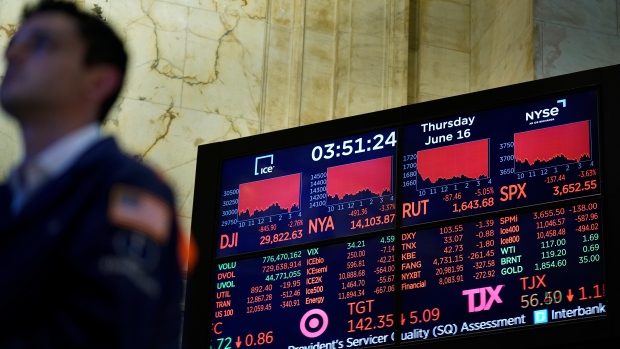May 10, 2024
'Sell in May and go away' makes less sense as technicals point to summer rally
By Dale Jackson

A series of summer rallies over the past decade have already taken steam out of the old ‘sell in May and go away’ adage, but if history repeats itself those who cash out ahead of this November’s U.S. presidential election could face an even bigger lost opportunity.
In a note to clients this week, Bank of America says U.S. presidential election years tend to see larger summer rallies. According to their analysis, the U.S. benchmark S&P 500 has been up 75 per cent of the time, producing an average return of 7.3 per cent, in years when Americans elect their leader going back to 1928.
If you include the same period for all years going back to 1928, the S&P 500 has been up 65 per cent of the time with an average return of 3.2 per cent.
While the May to October period is historically weak from a technical perspective, it produces positive returns most of the time.
"Never go away"
For Robert (Hap) Sneddon, technical analyst and president at CastleMoore, wise investors never really go away. Despite weakness in the S&P 500 over the summer months, he says there are historic seasonal opportunities in individual sectors such as biotechnology, bonds and energy.
“For sure, you don’t just ‘go away’ as it’s left in the media,” he says, adding that the S&P 500 is not an accurate measure of overall markets; especially for Canadian investors who need to consider currency fluctuations.
His charts show the Canadian dollar normally strengthens against the U.S. dollar from March to September but with the Bank of Canada currently talking about lowering interest rates and the U.S. Federal Reserve hinting at higher rates, the divergence is putting downward pressure on the loonie.
Technical analysis is still useful in your portfolio
While 2024 appears to be an outlier year in some ways, the fact remains that technical analysis can project the likelihood of something happening in the future and function as a final check on just about any investment decision we make.
Technical analysis basically boils down to predicting the future by studying the past. It’s based on the assumption that most human activity is predictable and the past will likely be repeated.
Technical analysts evaluate securities through statistics generated mostly by market prices and volume over different periods of time. There are several different technical methods and tools to predict market trends, thanks in part to the evolution of computer-assisted techniques.
One example familiar to many is the moving average, which tracks the average price of a security over a specified period of time. The moving average is used to spot trends by flattening out large fluctuations and establishing support levels on the lower end and resistance levels on the high end. The skill of the analyst lies in the ability to choose time periods and other criteria to get the most accurate read.
Unlike fundamental analysts, technical analysts do not attempt to quantify a security's intrinsic value. A fundamental analyst studies the actual nature of a security, while a technical analyst is not concerned with such fundamentals as corporate profits, supply and demand or quality of management. The technical analyst believes that sort of information is already priced into the market.
Although technical analysis is right more times than it’s wrong, it’s far from right all the time. There are no technical investing mutual funds and few pure technical portfolios to compare with fundamental or value funds.
Most technicians are part of big institutional investment teams that employ a mix of styles to find whatever works best, and many online technical analysis tools are available for average investors.




